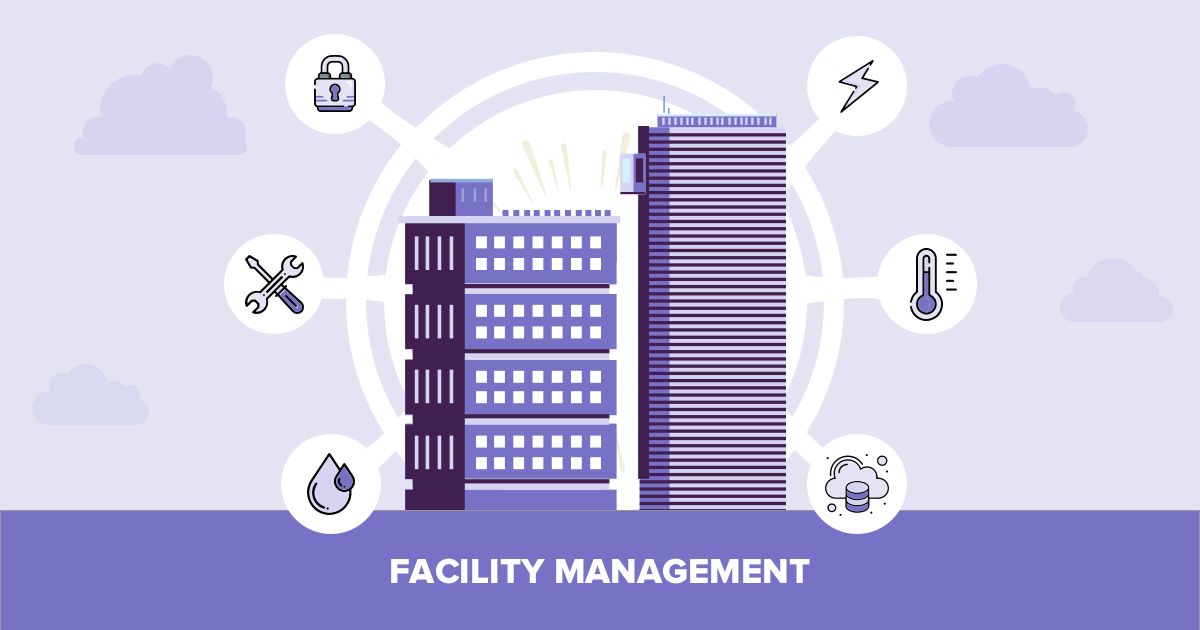Key Patterns Forming the Future of Facility Administration in 2024
As we look in advance to 2024, the landscape of center administration is poised for significant makeover, driven by numerous crucial patterns. The integration of clever structure innovations and a shift towards data-driven decision-making assurance to improve operational performance while prioritizing sustainability in practice.
Smart Structure Technologies

Smart building modern technologies encompass a broad variety of systems, consisting of intelligent lights, cooling and heating controls, and protection systems. By incorporating these systems, facility supervisors can monitor and readjust criteria in real-time, bring about significant decreases in power waste and functional costs. Clever sensing units can find tenancy levels and adjust lighting and temperature level as necessary, making certain that power is only used when necessary.
Moreover, these modern technologies promote boosted data collection, allowing companies to track use patterns and determine chances for further renovations. The execution of wise building modern technologies not just contributes to sustainability goals yet likewise produces much healthier workplace that can boost worker efficiency and complete satisfaction.
As we relocate right into 2024, the adoption of clever building technologies will likely increase, reflecting a more comprehensive shift towards even more intelligent, receptive, and sustainable center management techniques.
Data-Driven Decision Making
Increasingly, companies are leveraging data-driven decision making to improve facility administration practices. By using data analytics, center managers can obtain actionable understandings that significantly enhance operational efficiency and resource allowance. The integration of sophisticated technologies, such as IoT sensors and real-time surveillance systems, allows the collection of substantial amounts of data on structure performance, occupancy prices, and power consumption.
This riches of details allows center supervisors to identify patterns, forecast upkeep needs, and proactively address problems prior to they rise. Predictive analytics can forecast devices failings, reducing downtime and repair work expenses. Furthermore, information visualization devices facilitate much better communication amongst stakeholders, making certain that educated decisions are made collaboratively.
Moreover, data-driven methods improve calculated preparation by making it possible for center supervisors to analyze the effectiveness of current practices and make informed choices concerning investments in innovation or facilities. As organizations progressively prioritize operational excellence, data-driven decision making is positioned to come to be a keystone of effective center monitoring methods in 2024 and past. Eventually, the capability to take advantage of data efficiently will empower companies to develop a lot more effective, efficient, and resistant centers.
Sustainability and Eco-friendly Practices
The emphasis on data-driven decision making normally straightens with the expanding focus on sustainability and green techniques within facility monitoring. As companies progressively prioritize ecological obligation, facility supervisors are leveraging analytics to enhance resource use, lower waste, and lessen carbon footprints. This critical technique allows the integration of energy-efficient systems, such as LED lights, wise heating and cooling controls, and renewable resource sources right into facility procedures.
Additionally, the implementation of lasting methods extends past energy intake. Facility supervisors are adopting eco-friendly products and promoting reusing initiatives to develop a circular economic situation within their facilities. This not just enhances the ecological account of the organization yet likewise cultivates a culture of sustainability amongst staff members.
Compliance with ecological regulations is one weblink more critical element driving the adoption of eco-friendly techniques. By utilizing information analytics, facility managers can keep an eye on compliance metrics and determine locations for renovation, guaranteeing adherence to neighborhood and international sustainability standards.
Hybrid Work Versions
A significant shift towards crossbreed job models is reshaping the landscape of center monitoring in 2024. This paradigm combines remote and in-office job, demanding a reevaluation of space usage, resource allowance, and staff member involvement techniques. Organizations are progressively acknowledging the relevance of versatile work areas that cater to diverse my response demands and choices.
Center supervisors need to adjust by executing functional office layouts that support joint efforts while giving areas for concentrated work. This consists of the integration of innovation to facilitate seamless interaction and collaboration amongst in-office and remote workers. Smart structure solutions, furnished with analytics and sensors, enable real-time surveillance of space use, making it possible for organizations to enhance their settings efficiently.
Additionally, crossbreed work designs stress the demand for effective facility monitoring that focuses on employee experience. This includes not just modern technology and space design however likewise the growth of plans that promote a balanced work-life dynamic. As business navigate this shift, the duty of center monitoring becomes critical in producing an active office that cultivates productivity and drives organizational success. Essentially, the hybrid work design is reinventing center administration, urging an aggressive strategy to satisfy the progressing needs of the labor force.
Improved Occupant Health
As organizations embrace hybrid job versions, an enhanced focus on occupant health is coming to be important to facility management approaches. Facility Management. This change identifies that a healthy and balanced and pleased workforce straight affects efficiency and retention prices. Facility managers are currently prioritizing settings that advertise physical and psychological wellness, incorporating elements such as natural illumination, biophilic style, and obtainable wellness sources

Modern technology plays a crucial function in this evolution. Smart building systems can monitor ecological variables and change setups in real-time, making certain optimum comfort degrees - Facility Management. Additionally, responses mechanisms, such as tenancy sensing units and worker surveys, permit facility supervisors to continually refine wellness efforts based on occupant demands.

Final Thought
In 2024, the future of facility administration will be considerably affected by the assimilation of wise building modern technologies and data-driven decision-making, fostering improved functional efficiency. These trends collectively underscore the evolving landscape of facility management in response to modern obstacles and possibilities.
Center managers are advertising and embracing environment-friendly materials recycling campaigns to develop a round economic climate within their facilities.A significant change in the direction of hybrid work versions is reshaping the landscape of facility monitoring in 2024.In addition, hybrid work versions highlight the need for reliable center administration that prioritizes worker experience.As companies accept hybrid job models, an increased focus on passenger wellness is ending up being essential to facility monitoring techniques.In 2024, the future of center monitoring will be dramatically influenced by the combination of clever structure innovations and data-driven decision-making, fostering boosted operational performance.